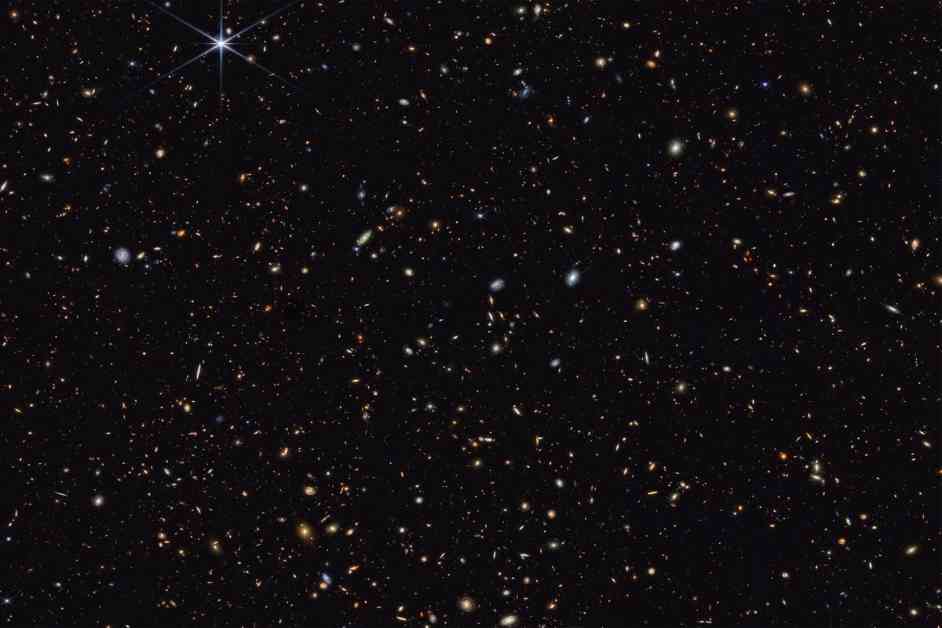Technological advancements often lead to discovering hidden mysteries in the universe, just like how infrared cameras revealed a hidden portrait in one of Picasso’s paintings. Similarly, the James Webb Space Telescope (JWST) has uncovered a puzzling population of galaxies in the early universe known as “little red dots” (LRDs). These galaxies appear as small, red blobs and have raised many questions among astronomers.
The JWST is designed to study the cosmic dawn, the period when the first stars and black holes were formed. The light from this era is faint and redshifted to the infrared, making it challenging to observe. The discovery of LRDs has sparked curiosity in the scientific community, as their existence may provide valuable insights into cosmic evolution.
Most LRDs emerged during a short period after the big bang and then seemingly disappeared without a trace in the present universe. Their unique red color and compact size present a mystery to astronomers. Theories suggest that LRDs may either host supermassive black holes or contain a large number of stars in a small space.
Despite the intriguing nature of these galaxies, there are challenges in understanding them fully. While the presence of supermassive black holes in LRDs is supported by certain spectroscopic features, the lack of x-ray emissions poses a perplexing contradiction. Additionally, the mass of the black holes in LRDs seems unusually high compared to the mass of stars in their galaxies, deviating from known scaling relations.
Alternatively, if LRDs only consist of stars, the sheer number required to produce the observed light output raises questions about the density of stars in these galaxies. Further observations using JWST and advanced x-ray telescopes may provide more insights into the nature of LRDs and help unravel their mysteries.
In conclusion, the enigmatic nature of LRDs offers a glimpse into a previously unexplored chapter of cosmic history. As astronomers continue to study these peculiar galaxies, they hope to shed light on their origins and significance in the evolving universe. The quest to understand LRDs is a testament to the intricate and fascinating nature of the cosmos, leaving scientists in awe and anticipation of what lies beyond.






